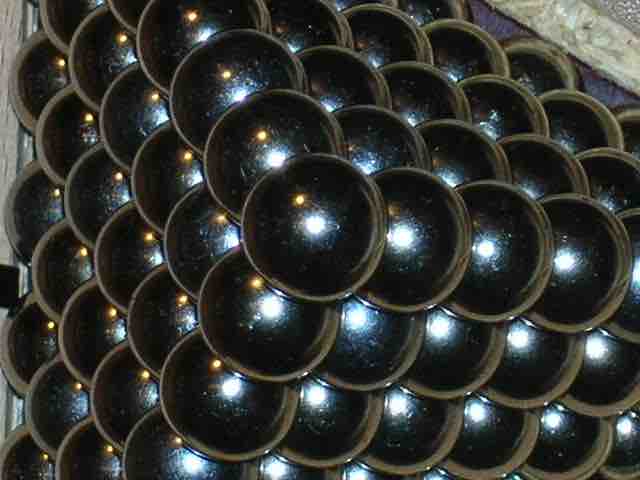Freezing, or solidification, is a phase transition in which a liquid turns into a solid when its temperature is lowered to or below its freezing point. All known liquids, except helium, freeze when the temperature is low enough. (Liquid helium remains a liquid at atmospheric pressure even at absolute zero, and can be solidified only under higher pressure.)
For most substances, the melting and freezing points are the same temperature; however, certain substances possess different solid-liquid transition temperatures. For example, agar displays a hysteresis in its melting and freezing temperatures: it melts at 85 °C (185 °F) and solidifies between 31 °C and 40 °C (89.6 °F to 104 °F).
Most liquids freeze by crystallization, the formation of a crystalline solid from the uniform liquid.

Crystalline Solid
Model of closely packed atoms within a crystalline solid.
Nucleation
This is a first-order thermodynamic phase transition, which means that as long as solid and liquid coexist, the equilibrium temperature of the system remains constant and equal to the melting point. Crystallization consists of two major events: nucleation and crystal growth. Nucleation is the step in which the molecules start to gather into clusters (on the scale of nanometers), arranging themselves in the periodic pattern that defines the crystal structure. The crystal growth is the subsequent growth of the nuclei that succeed in achieving and surpassing the critical cluster size.

Nucleation Leads to Crystal Formation
When sugar is supersaturated in water, nucleation will occur, allowing sugar molecules to stick together and form large crystal structures.
Crystallization of pure liquids usually begins at a lower temperature than the melting point, due to the high activation energy of homogeneous nucleation. The creation of a nucleus implies the formation of an interface at the boundaries of the new phase. Some energy is expended to form this interface, based on the surface energy of each phase. If a hypothetical nucleus is too small, the energy that would be released by forming its volume is not enough to create its surface, and nucleation does not proceed. Freezing does not start until the temperature is low enough to provide enough energy to form stable nuclei.
In the presence of irregularities on the surface of the containing vessel, solid or gaseous impurities, pre-formed solid crystals, or other nucleators, heterogeneous nucleation may occur. Heterogeneous nucleation is when nucleation occurs on a surface that the substance is in contact with.
The melting point of water at one atmosphere of pressure is very close to 0 °C (32 °F, 273.15 K), and in the presence of nucleating substances the freezing point of water is close to the melting point. However, in the absence of nucleators water can supercool to -40 °C (-40 °F, 233 K) before freezing. Under high pressure (2,000 atmospheres), water will supercool to as low as -70 °C (-94 °F, 203 K) before freezing.
Freezing is Accompanied by Release of Heat
Freezing is almost always an exothermic process, meaning that as liquid changes into solid, heat is released. This may seem counterintuitive, since the temperature of the material does not rise during freezing (except if the liquid is supercooled). But heat must be continually removed from the freezing liquid, or the freezing process will stop. The energy released upon freezing, known as the enthalpy of fusion, is a latent heat and is exactly the same as the energy required to melt the same amount of the solid.